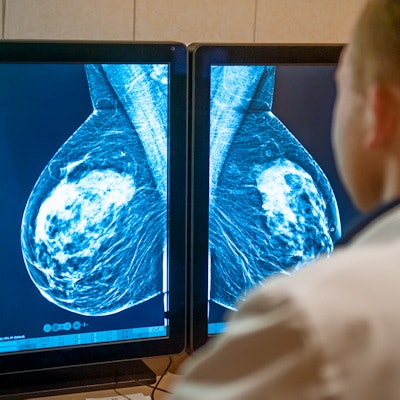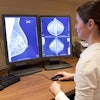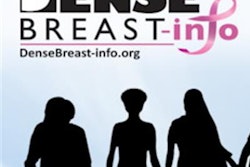
While many medical societies recommend annual mammography screenings for women ages 40 and older, public interest in mammograms and breast cancer varies by geography and has been affected by COVID-19, according to two recent studies.
In a study published June 21 in Current Problems in Cancer, researchers led by Dr. Benjamin Greiner from the University of Texas Medical Branch at Galveston found that relative search interest for mammograms in March 2020 on Google trends was 59.2% below forecasted search interest.
They also found that the decrease in public interest in breast cancer screenings slightly underestimated the actual screening usage numbers, suggesting Google Trends "may be utilized as an indicator for human behavior regarding cancer screening, particularly with colon and breast cancer screenings."
The decline in relative search interest was followed by a slow uptrend to normal near the end of May 2020.
"Our findings suggest that there is a large population in need of cancer screenings to reduce the fallout of delayed or missed cancer diagnoses," the authors wrote.
Piquing screening interest
In another study published June 22 in Preventive Medicine, a team led by Dr. Diamone Gathers of the University of New Mexico found that Breast Cancer Awareness month was associated with significantly higher internet search interest for both breast cancer and mammogram compared with the rest of the year.
The group found that the average mammogram internet search interest value for breast cancer awareness month was slightly less than 1.5-fold higher than the average interest for the remaining months of the year. Gathers and colleagues also found that mammography internet search interest showed a steady uptrend over the study period, which was held between 2006 and 2019.
Geographic data at the state level revealed a "significant" difference in breast cancer internet search interest between six states with an interest score of 89; these included Mississippi, Delaware, West Virginia, Maryland, Connecticut, and Alabama. Utah had an interest score of 54.
Gathers' group wrote that state programs could have a "great deal" of local impact: In 2018, for example, Delaware had the highest percentage of the population with up-to-date mammograms and the state offers completely free cancer care for residents, while Mississippi had one of the lowest breast cancer screening rates amongst older women in the U.S. and the highest breast cancer death rates in Black women.
These findings suggest that public awareness may not always translate into preventive action due to cost, availability, transportation, and other factors that go into successful screening, the researchers noted.
The need to do more
Greiner and his team said that public health initiatives and community efforts should be implemented to increase screening compliance during the pandemic and eliminate socioeconomic and racial disparities in cancer screening. They recommended physicians in both primary care and oncology settings seek out high cancer risk patients and aggressively make efforts to attenuate this disparity.
Gathers and colleagues meanwhile noted that location-specific internet search interest for breast cancer awareness month, including correlating interest with outcomes and state-level information, may be a "critically important key" to survival.
"Breast cancer awareness month has led to the increased public awareness and documented increase in breast cancer screening which decreases mortality and ultimately saves lives," they concluded. "Using these data would help to evaluate chronological and temporal opportunities in a geographically specific fashion to optimize screening and prevention in each community via a publicly available free tool."




















